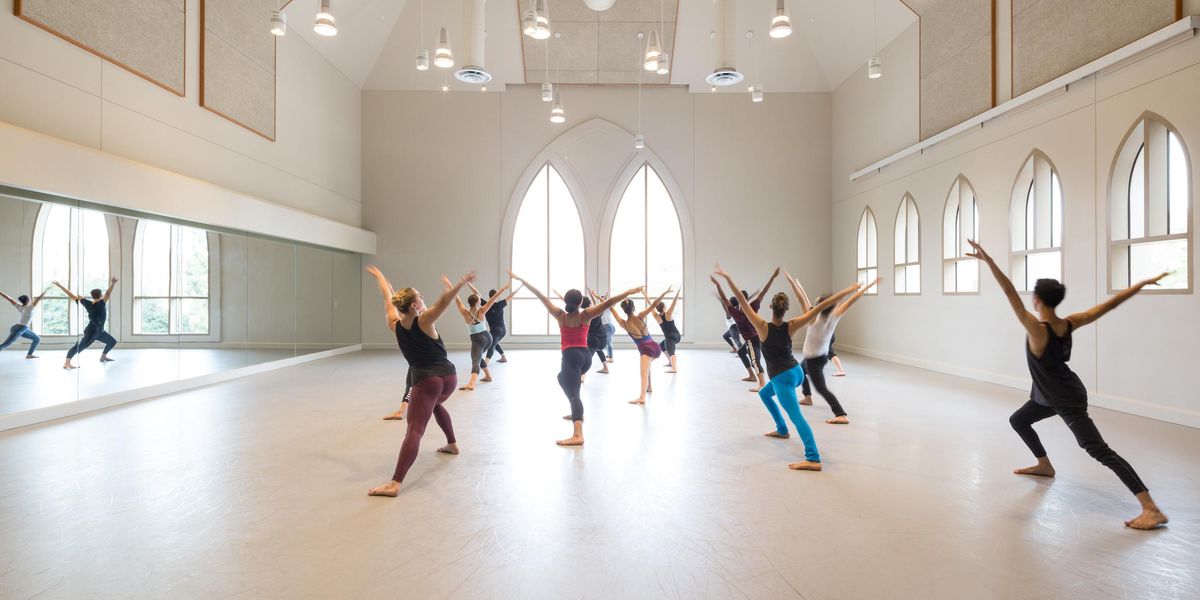On the Rise: Snappy Dance Theater
They’re shaking up Boston’s dance scene with a snap, crackle, and pop package of athleticism and creativity.
Snappy Dance Theater, one of the Boston area’s most popular modern dance troupes, has won its following by creating medleys that tap athletics, clown technique, silent film images, and, oh yes, studio technique. In general, SDT works tell stories that rely on narrative and characterizations to support the movement. The choreography, devised by the group but directed by artistic director Martha Mason, is embellished by a snap, crackle, and pop package of surprises that reveal as much about the humanity of the performers as their virtuosity.
The SDT performance language is drawn from Pilobolus-type body configurations, enhanced by a Nikolais-like penchant for expanding the choreography with lighting, props, and fantastic costumes. “Snappy travels the border of opposites between poetic and comedic, muscular and erotic, energetic yet haunting,” says Mason.
The resulting delight to the eye and the funny bone not only crosses boundaries of age, gender, and culture, but has expanded the seven-member troupe’s reputation beyond New England.
Among SDT’s most recent works is The Temperamental Wobble (2004), based on the cartoon format short stories, both amusing and macabre, of the late poet-artist Edward Gorey. Wobble is a series of sketches set in foreboding landscapes that include a graveyard and an ominous-looking Victorian mansion. Among the characters are a neglected child, a peppermint-striped creature created from two entwined bodies, three corpses that rise from their graves, and a grieving woman who hangs herself onstage. In contrast, LUMEN is a more abstract piece with origins in modern dance that catches the different moods of the stage lights and shadows. Turned this way and that, the angles of the bodies change, depending on their juxtapositions to each other and the way the lights reveal them.
Bonnie Duncan, a seven-year veteran with SDT, attributes the strength of the company to “Martha’s gift for seeing the spark and spunk of someone.” Duncan explains how SDT creates each piece. “We usually begin with theater games. Martha gives us a structure, presenting illustrations for the Gorey work, or pairing us off for LUMEN. In the beginning we play a lot and then remember what was good and try to re-create it,” she says. “But it’s not a democracy. Martha makes the final choices.” The dancers have trained in a polyglot of performance techniques: Circus, acrobatics, and acting, as well as ballet, modern, and jazz dance expand the possibilities.
Founded in 1996 by Mason, Marjorie Morgan, and George Whiteside (Morgan and Whiteside have since left), SDT is the only contemporary company in the Boston area that offers its dancers annual wages, albeit modest ones. They have regular performance dates, with national and international touring. Voted the Best Dance Company in the 2004 Boston Phoenix readers’ poll, Snappy was ranked the ninth largest performing arts organization in Greater Boston in 2003, the only contemporary dance company to make the top 25. In 2004, SDT became the only local dance company to be offered a cultural partnership at the Boston Center for the Arts, an honor and an entré into a splendid new performance space. Jurgen Weiss, Mason’s husband and SDT executive director, has a Ph.D. in economics from Harvard Business School and, he says, a business plan to make Snappy a self-sustaining organization, with 20–40 weeks salary and benefits for the dancers.
A performing member of the troupe as well as its director, Mason studied ballet from childhood, adding modern technique to her dance bag as a teenager. After graduation from the Mt. Holyoke dance department, she had a performance career in Paris and New York, then enrolled in workshops with Pilobolus co-director Jonathan Wolken. Among her subsequent gigs was an off-Broadway two-person dance theater piece as partner to a former Ringling Brothers circus clown. Jim Coleman, one of her Mt. Holyoke professors, remembers that Mason had “a hunger for all kinds of movement.”
“There is a through-line that shapes the Snappy works,” says Mason. “It’s my voice but Snappy will only be as good as its members.” Running on Mason’s batteries and fueled by the imaginations of its dancers, SDT is sure to continue its break out from the regional mold, as it continues to explore, as Mason says, “the edge between humor and pathos.” SDT’s two-month residency in Connecticut, March 27–June 2, culmintates in a performance at Naugatuck College in Waterbury, CT. Then they fly to France for two more performances in June. Their new work with violinist Lucia Lin will premier next fall at Boston’s Shubert Theater.
Iris Fanger, longtime
Dance Magazine contributor, writes about theater and dance for the Boston Phoenix and the Christian Science Monitor.




